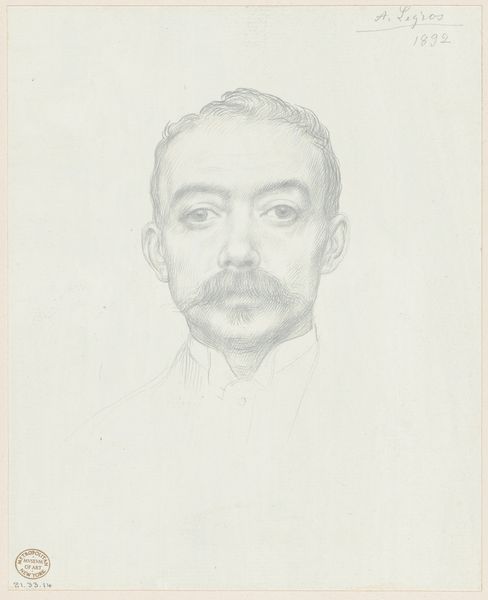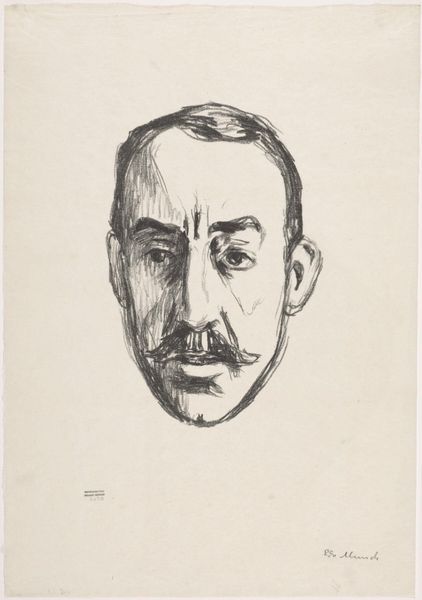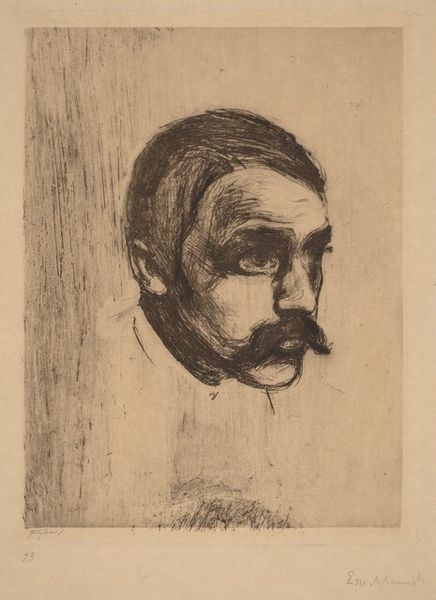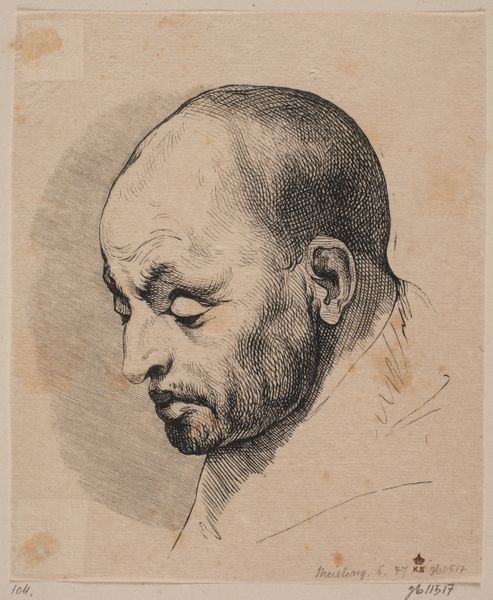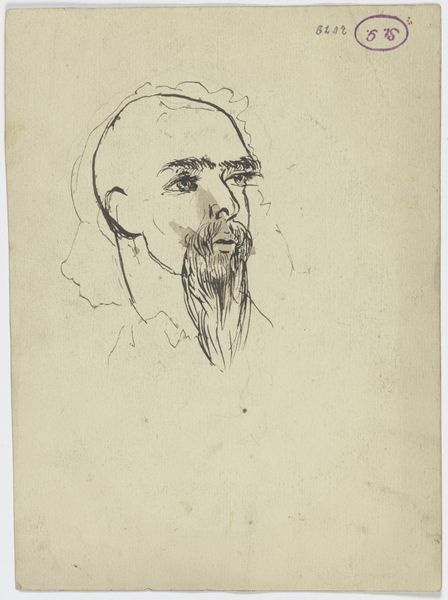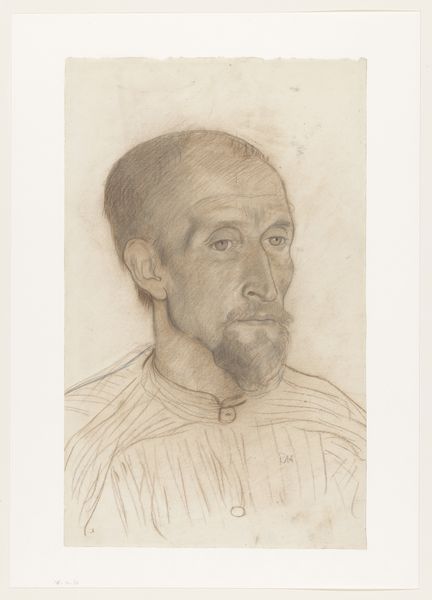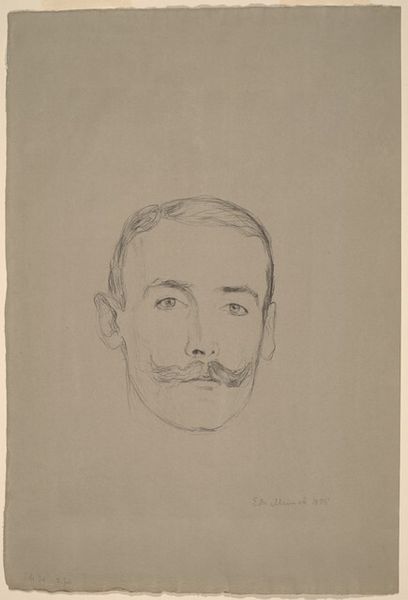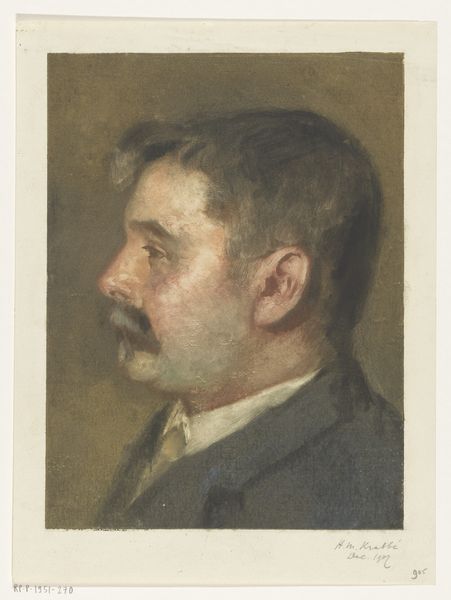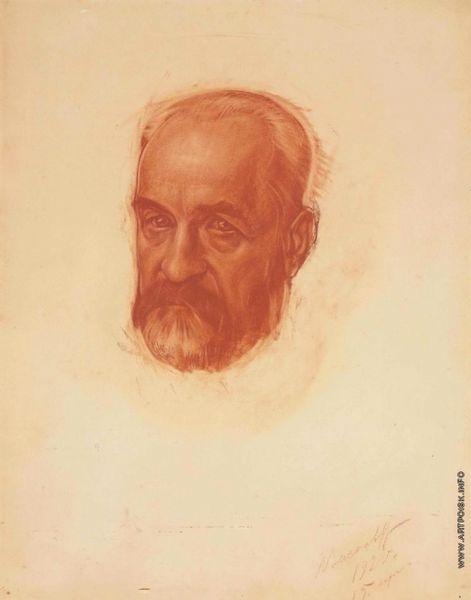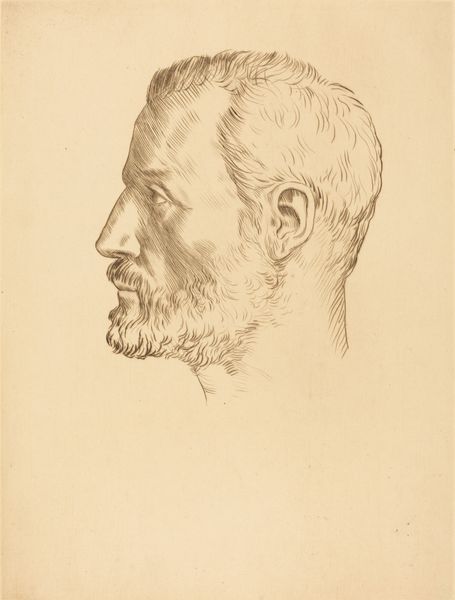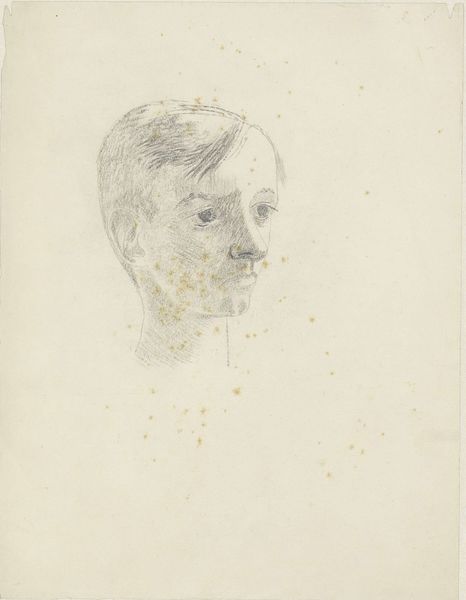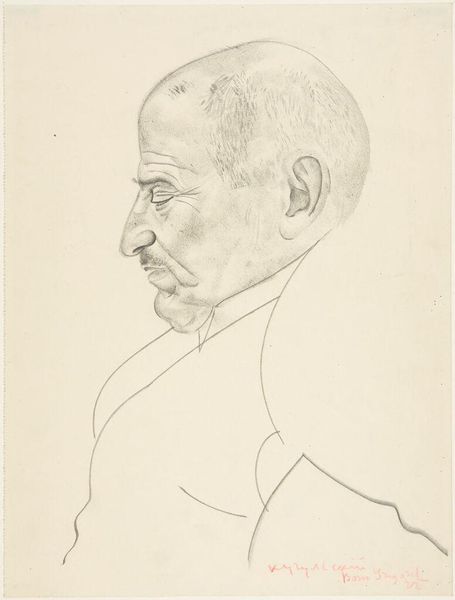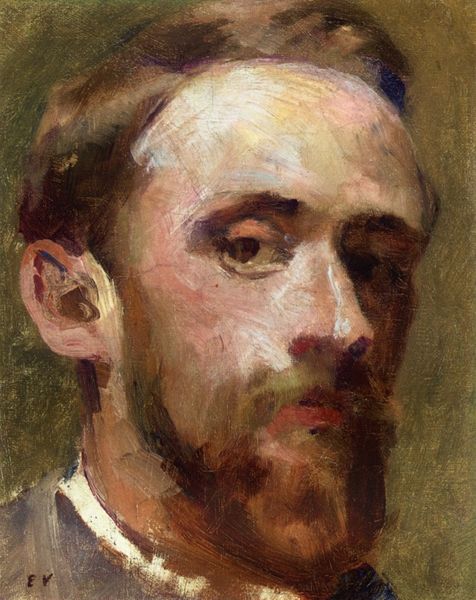
drawing, pencil
#
portrait
#
drawing
#
pencil
#
academic-art
#
modernism
#
realism
Dimensions: overall: 28.4 x 19.5 cm (11 3/16 x 7 11/16 in.)
Copyright: National Gallery of Art: CC0 1.0
Editor: This is Alphonse Legros’ “Head of a Man (Possible Portrait of Professor E.D. Adams),” a pencil drawing. I find the portrait direct, honest almost… What jumps out to you? Curator: It is a compelling image. Looking at this portrait through a critical lens, I am struck by how Legros uses the portrait format, traditionally a marker of status and power, to depict a man with such palpable vulnerability. I am drawn to wonder: What were the socio-political implications of representing male identity this way at the time? Editor: What do you mean by "socio-political implications?" Curator: Well, think about the academic circles Legros moved in, and the conservative artistic conventions of the period. To present a man, especially a professor, with such starkness, lacking idealization, challenges the established norms of masculinity and authority. It's a quiet form of resistance. Does that shift your initial reading? Editor: I see. So you're saying that within the context of the time, simply depicting a man without idealizing him was a statement in itself. It feels different from a more straightforward political artwork. Curator: Precisely. The realism, devoid of romanticism, forces the viewer to confront the individual, to see beyond social roles and expectations. It invites us to question the constructed nature of identity, of power, of masculinity itself. The gaze almost asks for understanding, for recognition of a shared humanity, rather than deference or admiration. It subtly critiques the structures of power. Editor: That's really insightful. I initially saw it as a straightforward portrait, but now I understand it can be interpreted as a challenge to the conventional representations of men in art and academia. Curator: Exactly! It’s through this kind of questioning that we uncover the layers of meaning embedded in art. Understanding these power dynamics is crucial to really "seeing" art, isn't it?
Comments
No comments
Be the first to comment and join the conversation on the ultimate creative platform.
